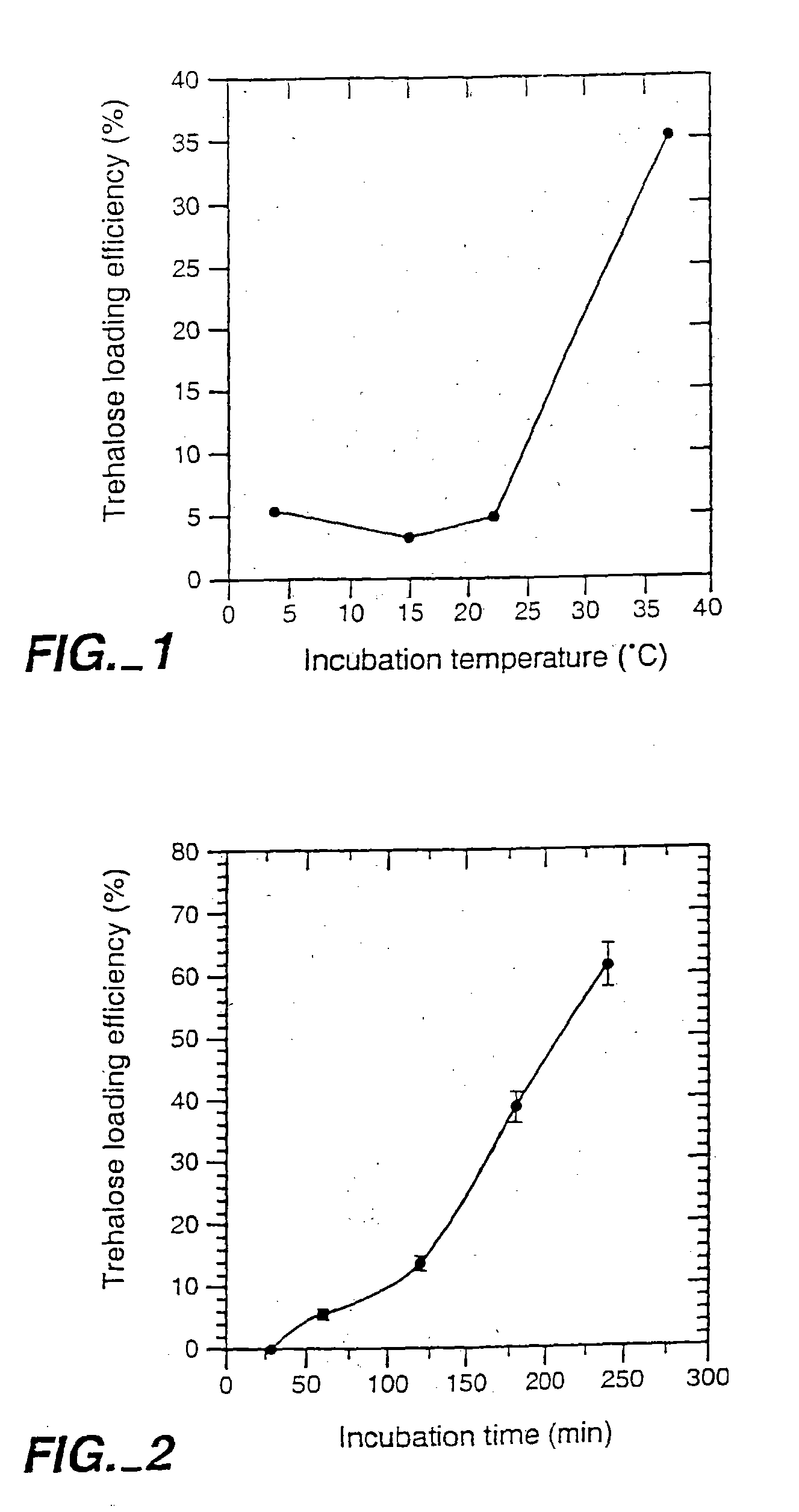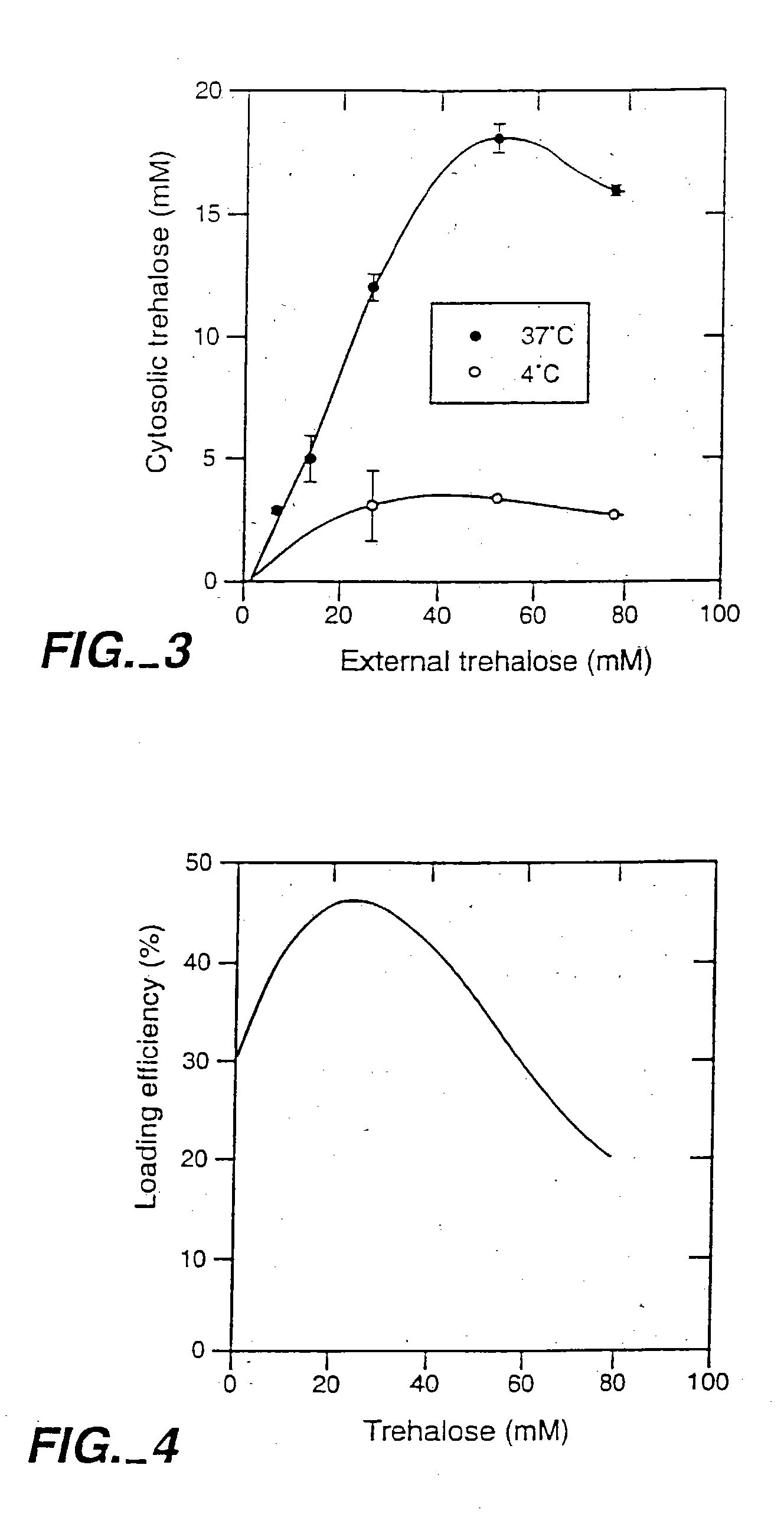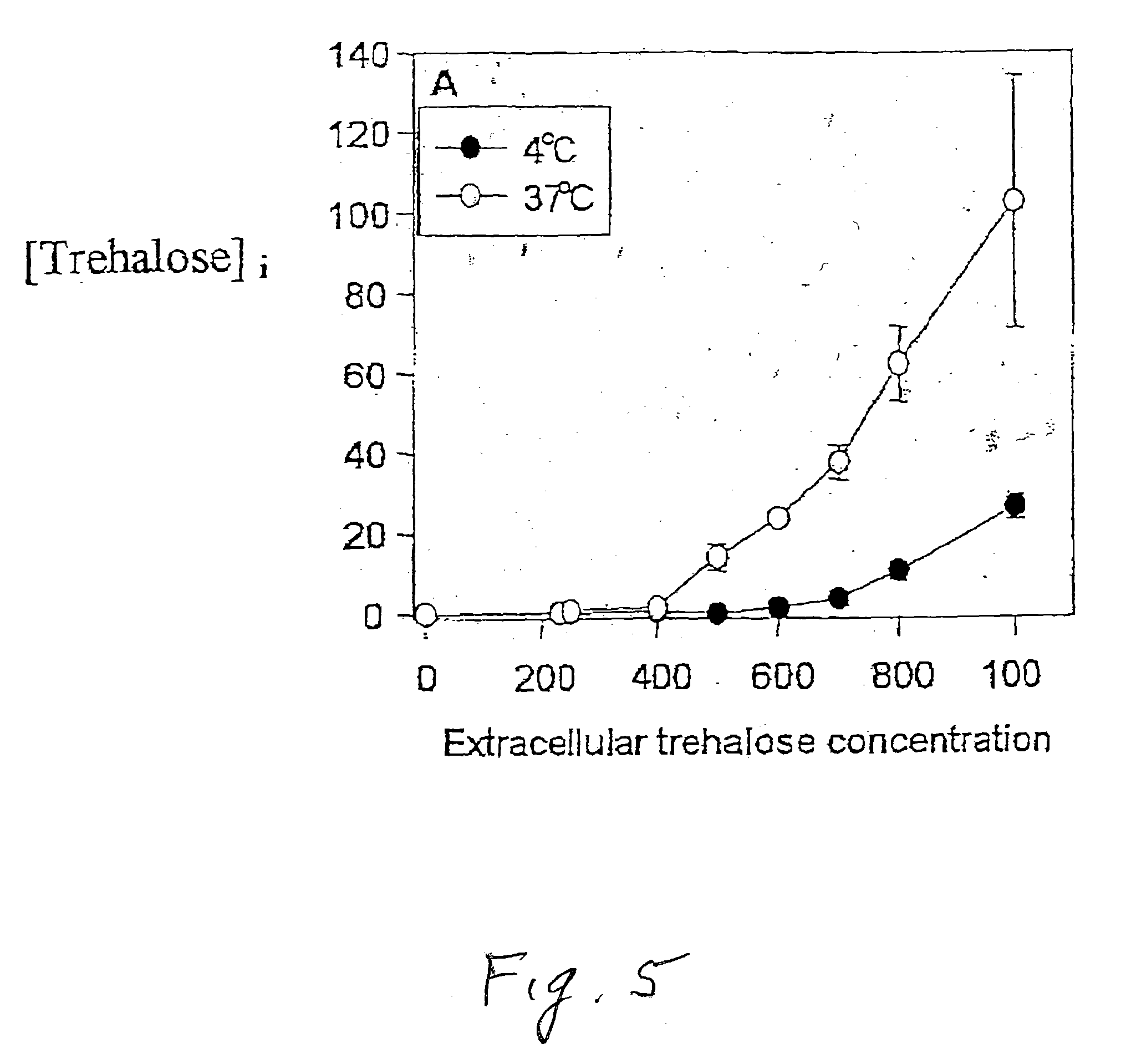Method for eliminating fragile cells from stored cells
a technology for fragile cells and stored cells, applied in the field of cell preservation and survival, can solve the problems of not being able to prevent hemolysis of a large not being able to prevent some loss of cell functionality, and preventing a small percentage of cells or platlets from hemolysis, so as to prevent a decrease in a loading gradient in the loading, and a decrease in the loading gradien
- Summary
- Abstract
- Description
- Claims
- Application Information
AI Technical Summary
Benefits of technology
Problems solved by technology
Method used
Image
Examples
example 1
[0075] Washing of Platelets. Platelet concentrations were obtained from the Sacramento blood center or from volunteers in our laboratory. Platelet rich plasma was centrifuged for 8 minutes at 320×g to remove erythrocytes and leukocytes. The supernatant was pelleted and washed two times (480×g for 22 minutes, 480×g for 15 minutes) in buffer A (100 MM NaCl, 10 MM KCl, 10 mM EGTA, 10 mM imidazole, pH 6.8). Platelet counts were obtained on a Coulter counter T890 (Coulter, Inc., Miami, Fla.).
[0076] Loading of Lucifer Yellow CH into Platelets. A fluorescent dye, lucifer yellow CH (LYCH), was used as a marker for penetration of the membrane by a solute. Washed platelets in a concentration of 1-2×109 platelets / ml were incubated at various temperatures in the presence of 1-20 mg / ml LYCH. Incubation temperatures and incubation times were chosen as indicated. After incubation the platelets suspensions were spun down for 20× at 14,000 RPM (table centrifuge), resuspended in buffer A, spun down ...
example 2
[0084]FIG. 5 graphically illustrates the loading efficiency of trehalose into human erythrocytic, cells as a function of external trehalose concentration at respective temperatures of 4° C. and 37° C. Erythrocytic cells were exposed to trehalose for 18 hours at either 4° C. or 37° C. The trehalose concentration in the incubation medium varied between 230 mM and 1000 mM. Each incubation buffer contained trehalose (between 230 mM and 1000 mM) and 100 mOsm PBS pH 7.2. Increase in the trehalose concentration in the loading medium results in an increase in the sugar uptake, raching abourt 100 mM cytoplasmic trehalose in erythrocytes incubated in 1000 mM trehalose and 100 mOsm PBS. At 4° C., the uptake was very limited, being about 25 mm. The trehalose intake was measured using anthrone assay and confirmed by high performance liquid chromatography. It is clear that there was substantial loading at 37° C., but not at 4° C. Furthermore, trehalose loading was not significant unless the extra...
example 3
[0085]FIG. 6 graphically illustrates the fragility index of erythrocytic cells incubated overnight at respective temperatures of 4° C. and 37° C. in the presence of and as a function of increasing intracellular trehalose concentrations. The osmotic fragility index was generated by the extent of hemolysis as a function of the NaCl concentration. The erythrocytic cells that had been loaded in trehalose solutions (between 250 mM and 1000 mM) in 100 mOsm PBS were suspended in increasing concentrations of NaCl (between 50 and 600 mOsm NaCl). The percent hemolysis measured after resuspending the loaded cells in NaCl represents the fragility index. The data show that the erythrocytic cells were stable osmotically in trehalose media with concentrations between 250 mM and 800 mM trehalose at both 37° C. and 4° C. In 1000 mM trehalose at 37° C., there is a high increase in the fragility index suggesting that the cells were unstable in this medium (1000 mM trehalose in 100 mOsm PBS).
PUM
| Property | Measurement | Unit |
|---|---|---|
| osmolarity | aaaaa | aaaaa |
| osmolarity | aaaaa | aaaaa |
| osmolarity | aaaaa | aaaaa |
Abstract
Description
Claims
Application Information
 Login to View More
Login to View More - R&D
- Intellectual Property
- Life Sciences
- Materials
- Tech Scout
- Unparalleled Data Quality
- Higher Quality Content
- 60% Fewer Hallucinations
Browse by: Latest US Patents, China's latest patents, Technical Efficacy Thesaurus, Application Domain, Technology Topic, Popular Technical Reports.
© 2025 PatSnap. All rights reserved.Legal|Privacy policy|Modern Slavery Act Transparency Statement|Sitemap|About US| Contact US: help@patsnap.com



